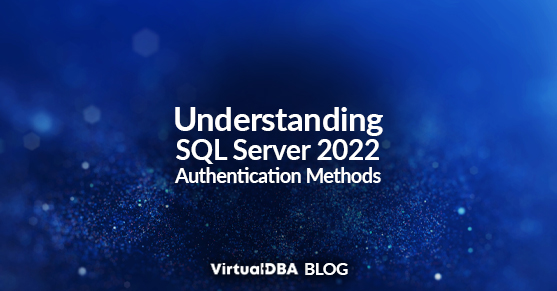SQL Server Authentication Methods Demystified
SQL Server authentication methods are crucial for ensuring secure and efficient access to your database. In this blog, we will explore various authentication options, detailing their benefits and disadvantages to help you choose the best method for your organization. Understanding these methods can significantly enhance your database security and streamline user access.
1. Windows Authentication
Benefits:
- Integrated Security: Users authenticate using their Windows credentials, making access seamless if logged in to Windows.
- Robust Security: Tightly integrated with Windows security mechanisms.
- Single Sign-On (SSO): Seamless connection if users are logged into Windows.
Disadvantages:
- Dependency on Active Directory: Requires a functional AD environment.
- Limited for Non-Windows Clients: Not suitable for non-Windows platforms.
2. SQL Server Authentication
Benefits:
- Independence from Windows: Works with any client platform.
- Granular Control: Allows specific SQL Server logins with customized permissions.
Disadvantages:
- Password Management: Users must remember and manage separate SQL Server passwords.
- Security Risk: Passwords can be vulnerable if not handled securely.
3. Microsoft Entra MFA (Multi-Factor Authentication)
Benefits:
- Enhanced Security: Requires Multi-Factor Authentication (MFA; for example, password + one-time code sent through text message).
- Protection against Credential Theft: Extra layer of security; even if the attacker obtains a user’s password, they will not be able to get the user’s MFA code unless they have the user’s physical device
Disadvantages:
- Complexity: Users need to understand and use the additional authentication factor.
- Setup Overhead: Requires configuring MFA infrastructure.
4. Microsoft Entra Password
Benefits:
- Specific to SQL Server: Dedicated passwords for SQL Server access.
- Granular Control: Similar to SQL Server Authentication.
Disadvantages:
- Password Management: Same as SQL Server Authentication.
5. Microsoft Entra Integrated
Benefits:
- Seamless Integration: Integrates with other Microsoft services, including Azure SQL Database and Azure Managed Services.
- Simplified Authentication: Users don’t need separate SQL Server credentials.
Disadvantages:
- Dependency on Integration: It may not work well outside the Microsoft ecosystem.
6. Microsoft Entra Service Principal
Benefits:
- Non-Human Authentication: Used for applications, services, or automation.
- Secure Communication: Applications, services, or other automation processes can authenticate securely.
Disadvantages:
- Complex Setup: Requires understanding of service principals and Azure Active Directory.
7. Microsoft Entra Managed Identity
Benefits:
- Azure Resource Authentication: Used for Azure resources (e.g., VMs, Azure Functions).
- No Credentials to Manage: No need to store or rotate credentials.
Disadvantages:
- Limited to Azure Resources: Only applicable within Azure.
8. Microsoft Entra Default
Benefits:
- Out-of-the-Box Choice: Default method provided by Microsoft Entra.
- Context-Specific: Varies based on the specific environment.
Disadvantages:
- Lack of Customization: May not meet specific requirements.
Conclusion
Choosing the correct authentication method for SQL Server depends on your organization’s needs, security policies, and infrastructure. Evaluate each method carefully, considering security, ease of use, and compatibility factors. Remember, no one-size-fits-all solution exists, so tailor your choice to your unique environment.
For more information, please contact us.
Ensure security, performance, and stability for your database with our SQL Server Database Administration and Support services.

